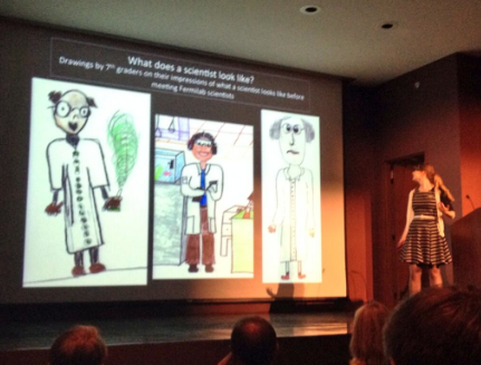I first heard about science communicator Emily Graslie when her Where My Ladies At? video went viral last year. I immediately became a fan of her awesome YouTube channel, The Brain Scoop, which takes you inside of the amazing scientific research going on at the Field Museum in Chicago. Emily was the guest speaker at the monthly meeting of the Field Museum Women In Science group open to the public so I was sure to attend!
Emily began her talk on "The Importance of Science Role Models in the Media" with a discussion of her female science role models growing up. The first being her mom, a successful medical doctor, and the second, Ms. Frizzle from the book series and animated show, The Magic School Bus. I was also a big fan of Ms. Frizzle and her class, along with other science shows, such as Bill Nye the Science Guy. But Emily made an excellent point, that there really were not any real female science role models in the media when we were growing up and that they are still scarce.
Stereotyping inhibits science communication because diversity is lacking. A diverse population wants to get information from diverse sources. More female science role models would also encourage more young women to pursue science.
Emily Graslie suggests that we do the following to help:
- Create encouraging environments for women to take on these science communication roles.
- Every institution ought to have a Chief Curiosity Correspondent.
- Provide support for communicators within the scientific community.
- Practicing scientists shouldn't be expected to devote a majority of their time to communication - accommodate others to discuss ongoing work, and ensue a balance of women and minorities.
- Promote and champion the world of current and former women scientists.


 RSS Feed
RSS Feed

